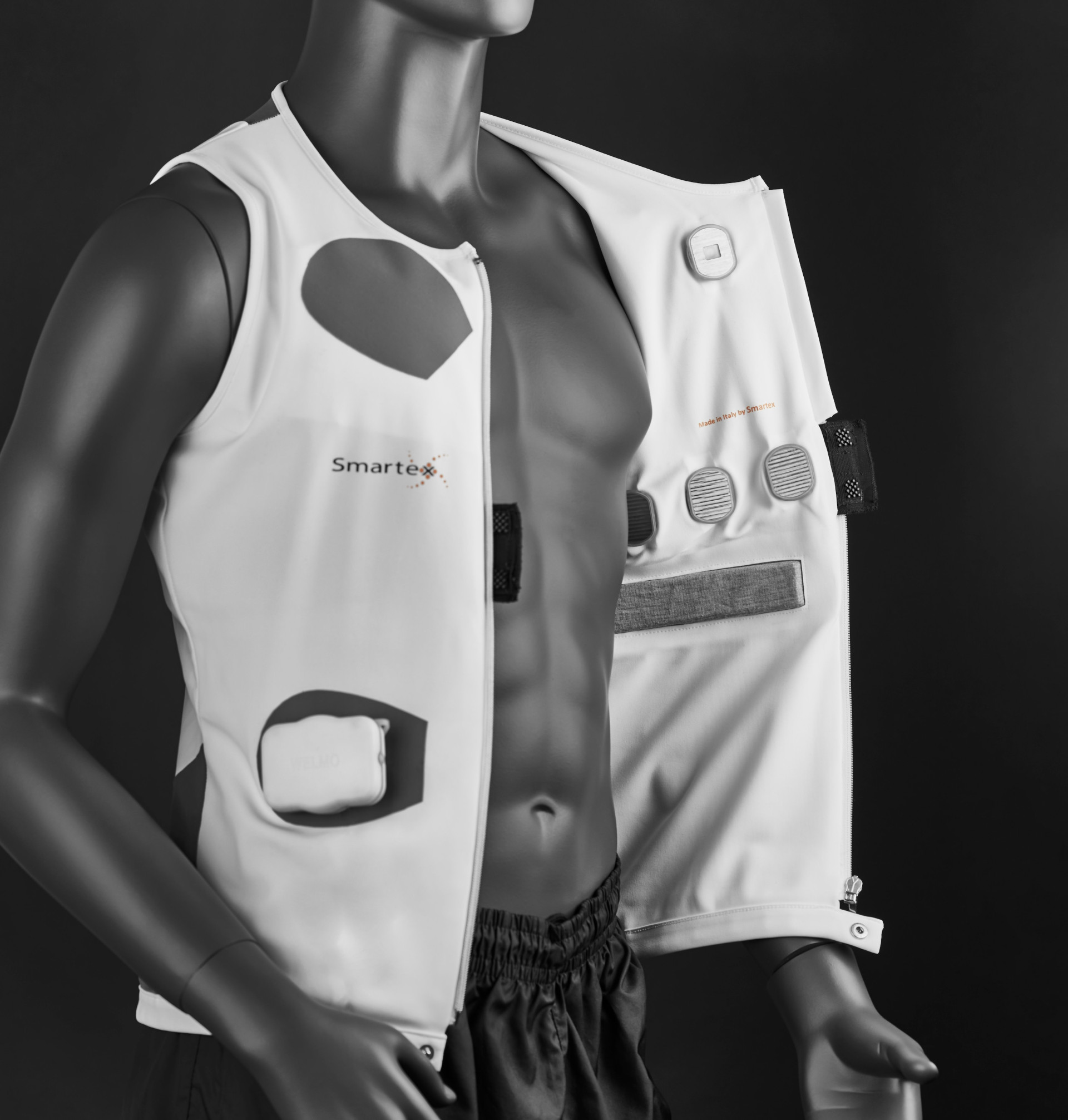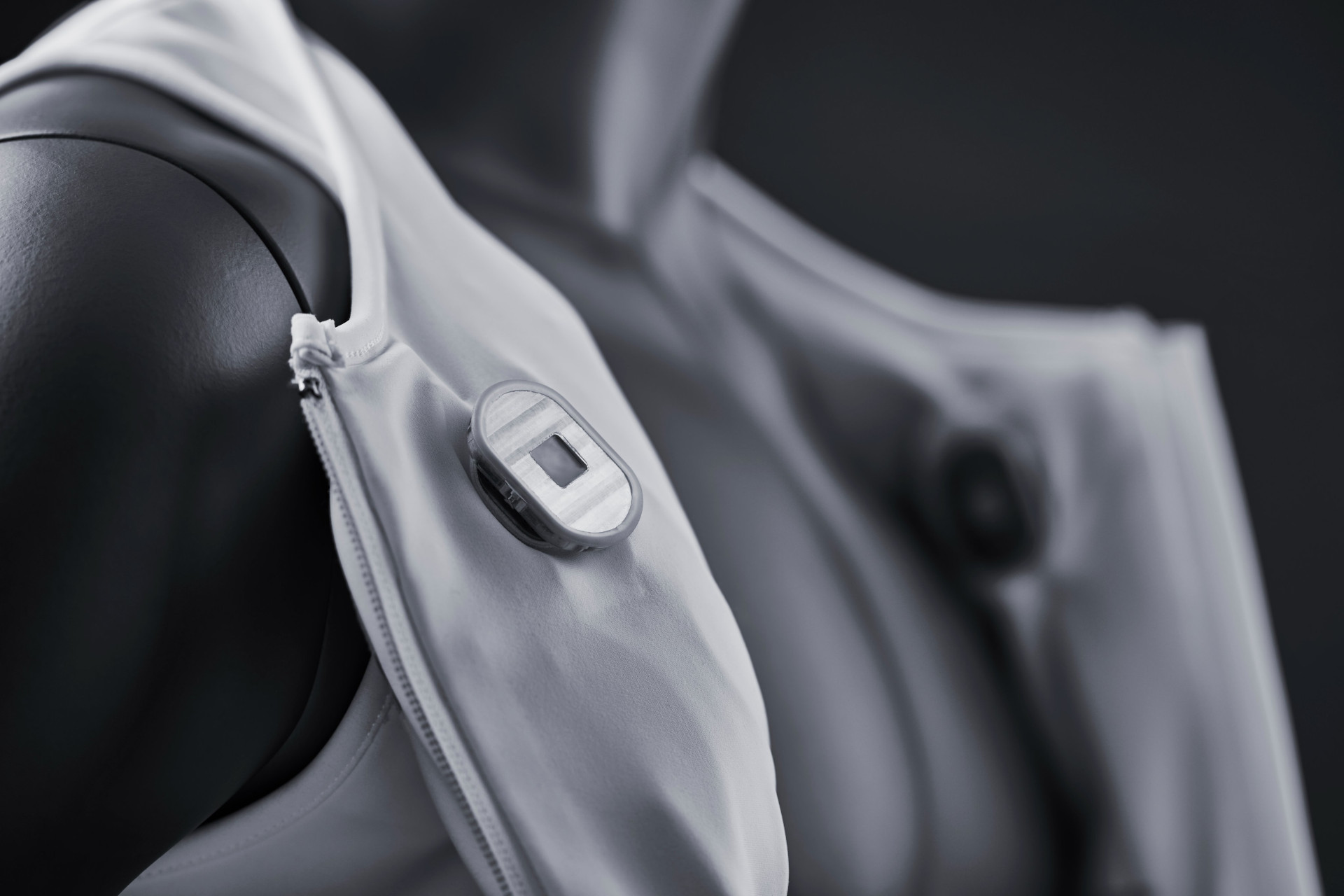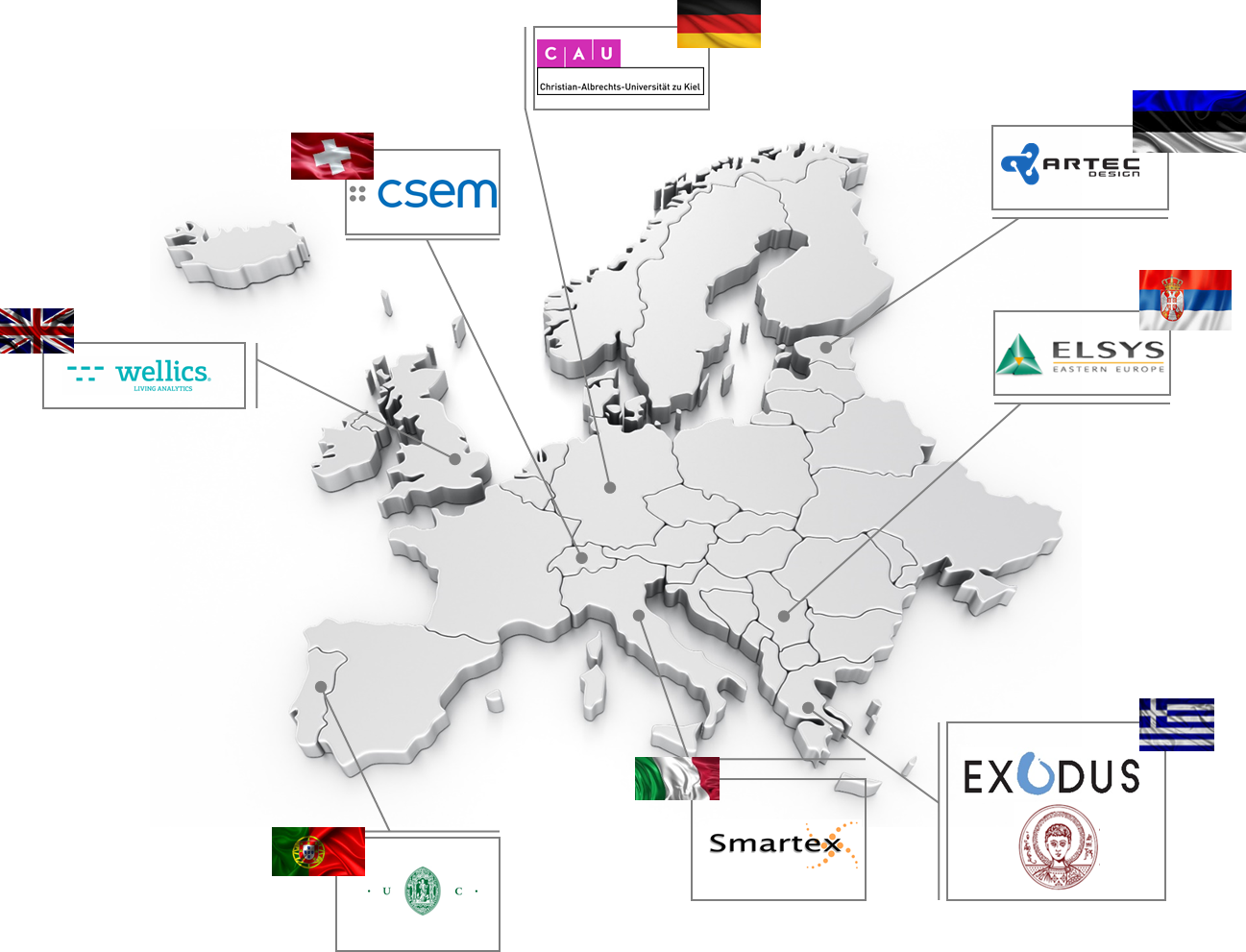PORTFOLIO
Wearable Electronics for Lung Monitoring
Low-power wearable device for healthcare that captures and streams lung sound and electrical impedance tomography (EIT) signals. This data logger is designed for a wearable vest, providing continuous monitoring and transmission to a nearby Android tablet.
Technologies
- STM32 Microcontroller
- C on ARM Cortex-M
- Bluetooth 5 Low Energy
- USB-C, eMMC, LiPo Battery

Challenge
Lung-related diseases such as chronic obstructive pulmonary disease (COPD), pneumonia, and asthma are leading causes of death in the European Union. Currently, patient assessments are limited to brief, in-clinic visits or hospitalizations, providing only a snapshot of the patient’s condition. This approach fails to capture short-term trends in disease progression, whether deterioration or improvement, and lacks the capability for continuous, real-time monitoring, particularly in remote settings like patients’ homes.
Moreover, the devices used for monitoring are often bulky, expensive, uncomfortable, and complex, necessitating specialized personnel for operation. Many of these devices also depend on patient cooperation and compliance to ensure accurate results. The integration of advanced electronics into garments offers a promising solution to these challenges, enabling more comfortable, accessible, and effective monitoring of lung diseases.
The Horizon 2020 WELMO project focused on developing and validating a new generation of low-cost, low-power miniaturized sensors. These sensors are integrated into a comfortable vest, allowing for effective and accurate lung monitoring. By simultaneously collecting lung sound and electrical impedance tomography (EIT) signals with the same sensors, the data can be combined, processed, and linked to specific clinical outcomes. This innovation enables systematic, accurate, and real-time evaluation of respiratory conditions.
Solution
Our innovative solution is built on four seamlessly integrated components:
- Wearable Cooperative Sensors: Low-power, washable sensors that measure EIT and lung sounds, transmitting the data to a wearable device.
- Wearable Device: This device powers the sensors, stores the collected data, and streams it in real-time to a connector (an Android tablet).
- Connector: Running on the Android tablet, this graphical application displays real-time data from the wearable device and securely transmits it to a server for further processing.
- Central Node: Featuring advanced AI algorithms, this server application performs preliminary analysis of the recorded samples and provides a web-based interface for doctors to review and interpret the data.
As part of a collaborative consortium, we partnered with CSEM to co-develop the cutting-edge wearable device. Our contributions spanned the entire development process, including schematic design and PCB layout design in Altium Designer, embedded software development with C, industrial design in Solid Edge, and the production of the wearable device and sensor electronics. Furthermore, we developed a Java library for the communication protocol implementation on the connector (Android tablet).
The embedded software for our wearable device underwent extensive optimizations to maximize efficiency and performance. On the STM32F2 microcontroller, we optimized data pipelines using direct memory access (DMA), enabling the bare-metal firmware to seamlessly read data via SPI, store it on the eMMC flash file system through SDIO, and stream it via Bluetooth and USB. In future projects, we plan to upgrade to the more capable and energy-efficient STM32H7 microcontroller.
To achieve maximum wireless throughput, we optimized Bluetooth communication by using 2M PHY and data length extension (DLE). We also utilized the low-level L2CAP layer with our proprietary communication protocol, bypassing the higher-level ATT and GATT layers for superior performance.
Power efficiency was a top priority, allowing us to minimize the size and weight of the wearable device. By optimizing for ultra-low power consumption, we were able to integrate a smaller and lighter Varta EasyPack Li-polymer battery, enhancing usability without compromising functionality.

”I had the pleasure of working with Artec Design in the EU-funded R&D project "WELMO". Artec Design impressed me with a highly professional and solution-oriented communication, on-time delivery of mounted circuit boards and especially with the development and implementation of fast and reliable Bluetooth communication.
Project ManagerCSEM
Specifications
Features
Bluetooth 5 Low Energy (Ezurio BL651 module with the nRF52810 chipset), 8GB of eMMC storage, 480 Mbps USB 2.0 for fast data transfer, lithium polymer battery for extended operation
Processor
STMicroelectronics STM32 (Cortex-M) microcontroller
Software Platform
C programming on a bare-metal microcontroller using the CMake build system; Java library for seamless communications with Android tablets; Zephyr OS on BLE module
Interfaces
ULPI, SDIO, SPI, I2C, UART, ADC, GPIO
Power
Varta EasyPack L battery (1200mAh) with fuel gauge and convenient USB-C charging
Communications
A project-specific protocol and encoding that is used over USB data layer and Bluetooth L2CAP layer

Impact
The project culminated in a pilot clinical investigation, structured as an open, prospective, monocentric, single-arm study using a non-CE-marked medical device. This required extensive approval from local and national authorities, participant insurance, and official study registration. The study received approval from the Ethics Committee of the Medical Faculty at Christian Albrechts University (CAU) in Kiel, Germany, as well as the German Federal Institute for Drugs and Medical Devices. The results were published in IOPscience under the title Wearable Pulmonary Monitoring System with Integrated Functional Lung Imaging and Chest Sound Recording: A Clinical Investigation in Healthy Subjects.
In the study, twenty participants (aged 23–65 years) wore the vests and completed a 14-step protocol that included phases of quiet and deep breathing, slow and forced full expiration maneuvers, coughing, and breath-holding in seated and three horizontal postures. EIT, chest sound, and accelerometer data were streamed to a central node using the connector. Participants also provided feedback on the vest’s comfort and usability through a questionnaire.
All subjects successfully completed the protocol, with 89% yielding good to excellent EIT waveforms and functional EIT images. The EIT accurately detected breathing pattern and posture-dependent changes in ventilation distribution. Chest sounds were recorded in all participants, with audible heart sounds detected in 44% to 67% of the cases, depending on the sensor placement. Additionally, the accelerometer correctly identified posture in all participants.

About CSEM
Founded in 1984 and headquartered in Neuchâtel, CSEM (Swiss Center for Electronics and Microtechnology) is an internationally recognized innovation specialist with over 600 employees across six locations in Switzerland and more than 200 registered patents. They develop disruptive technologies with a high societal impact in the fields of precision manufacturing, digitalization, ultra-low-power electronics, optical elements, AI, and sustainable energy. Then, they transfer these innovations to industry partners in a variety of sectors, including renewable energy, healthcare, watchmaking, and aerospace, or encourage start-up creations.
As a public-private, non-profit organization, their mission is to support the innovation of Swiss companies and strengthen the economy through ongoing collaboration with leading universities, research institutes, and industrial partners.
About Project
- Project Name: WELMO – Wearable Electronics for Effective Lung Monitoring
- Consortium: Swiss Center for Electronics and Microtechnology (CSEM), ELSYS, University of Coimbra, University of Kiel, Aristotle University of Thessaloniki, Smartex, Wellics
- Duration: January 2019 to June 2022
- Call Identifier: H2020-ICT-2018-2
- Funding: 3,999,675 EUR
- Duration: 42 months




